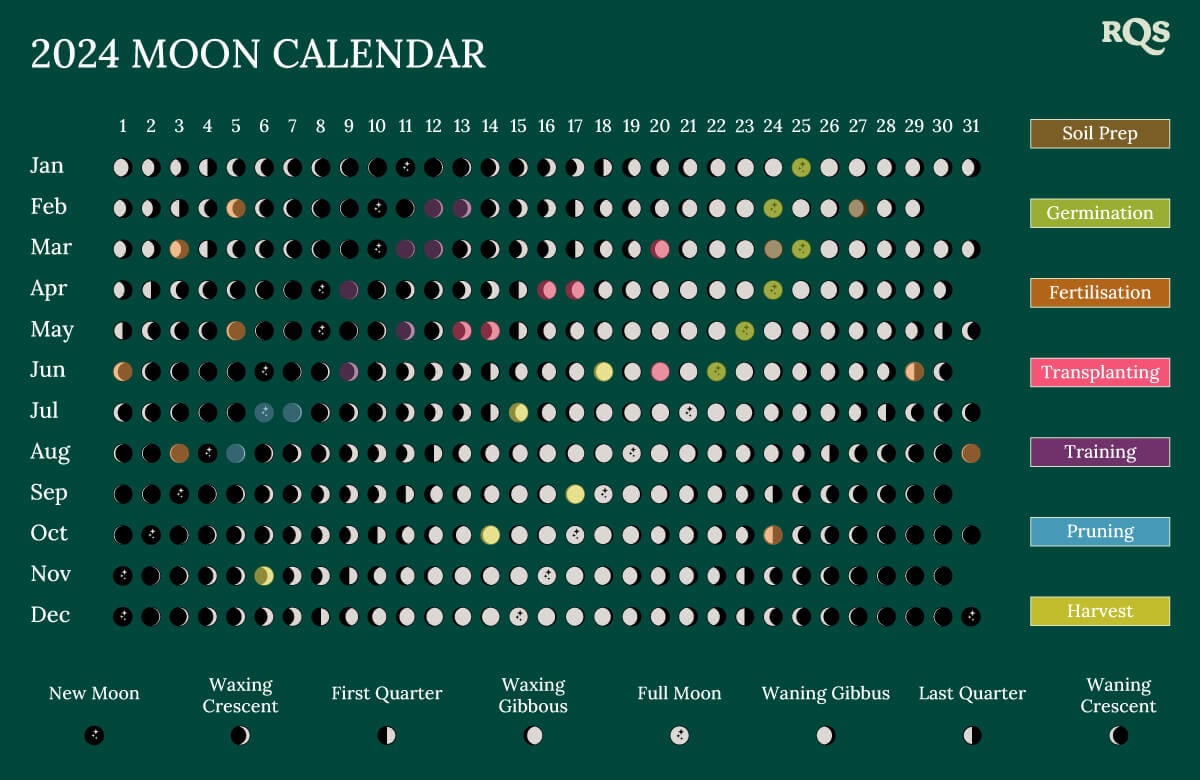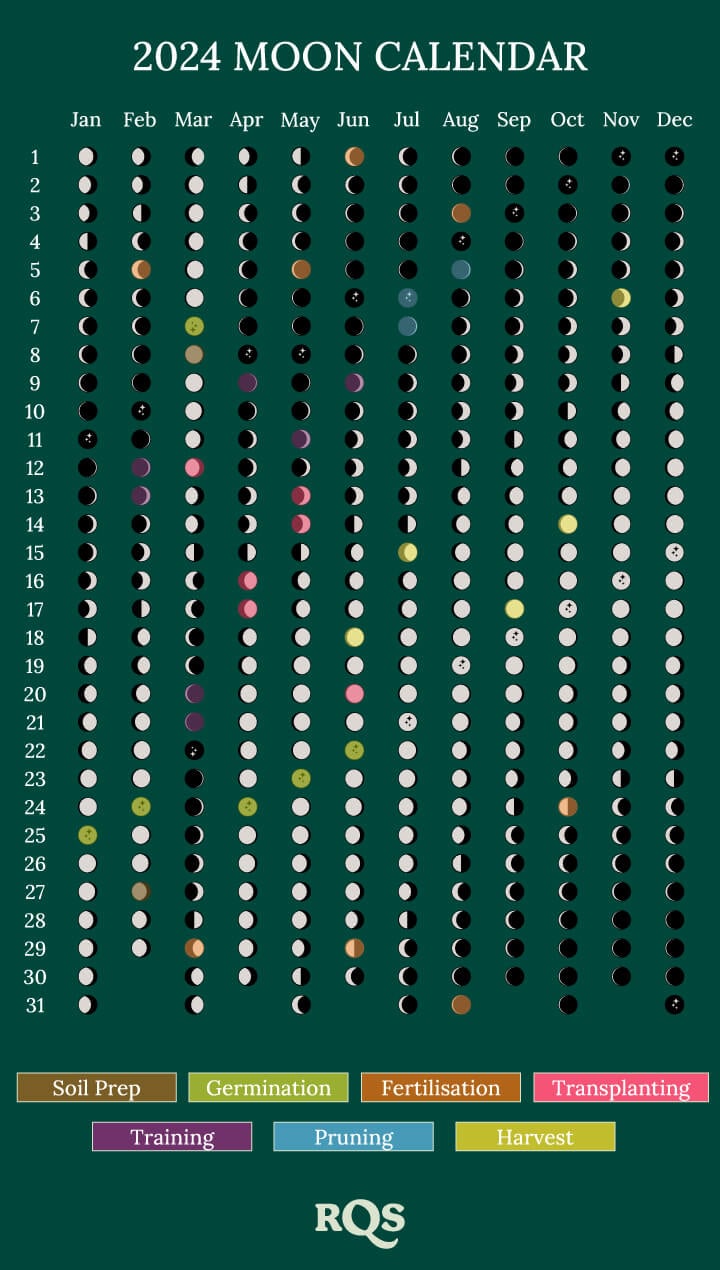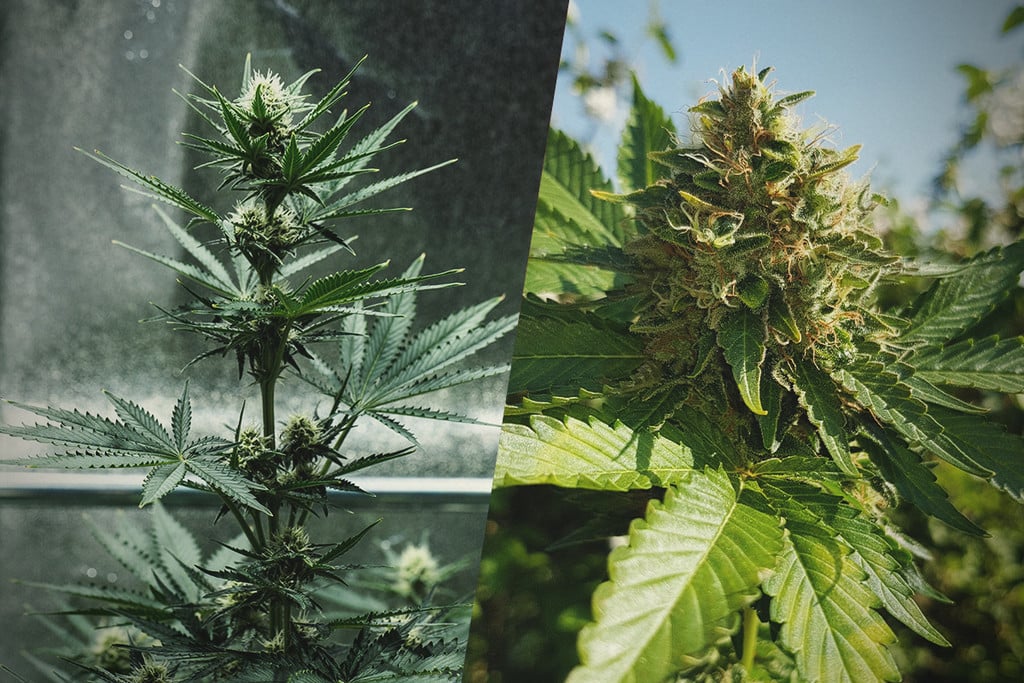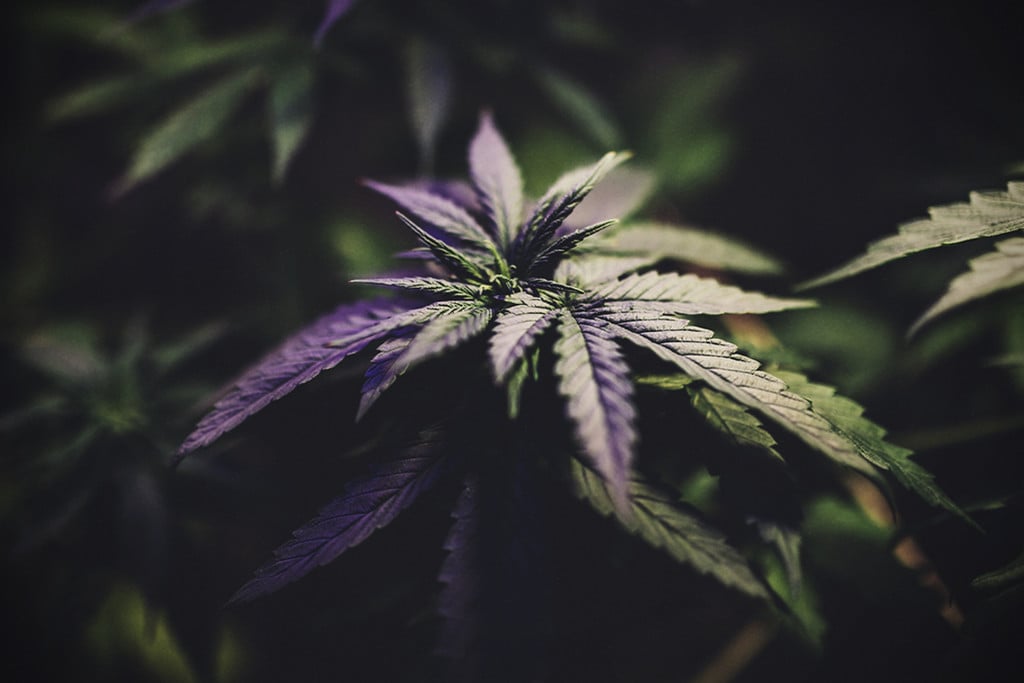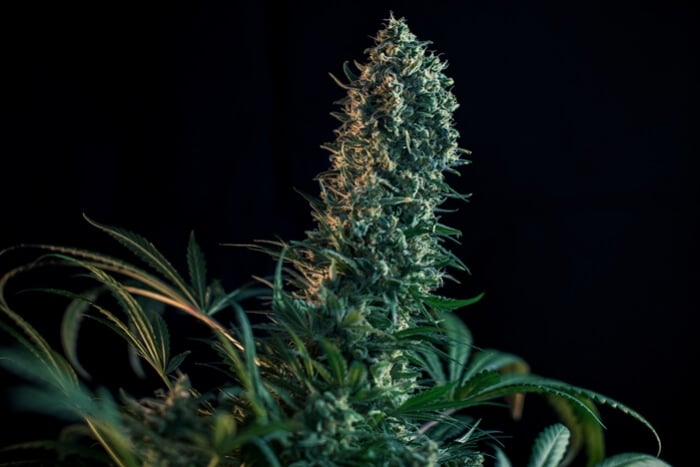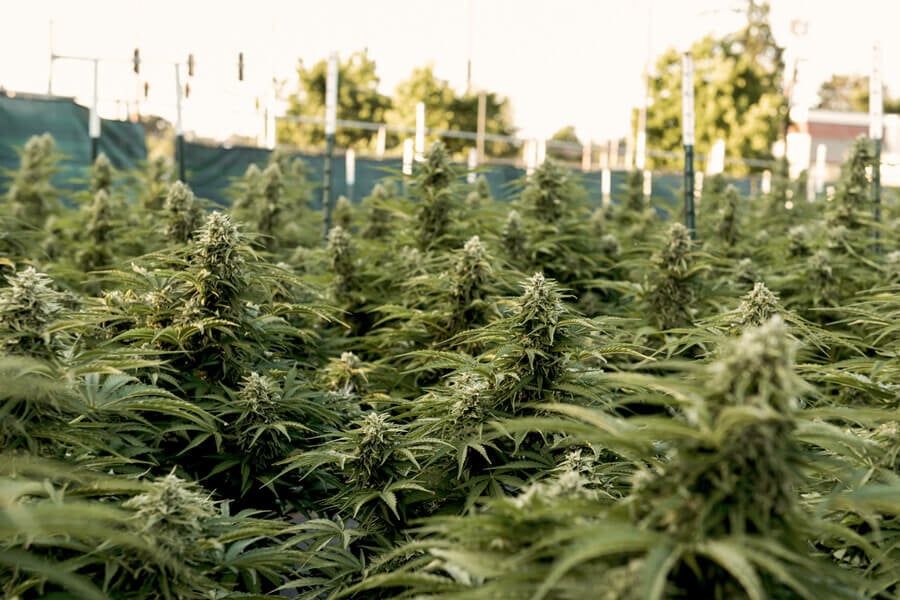.
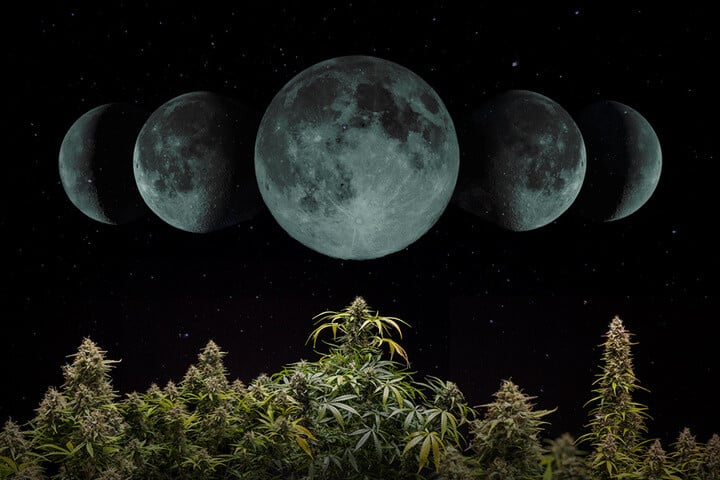
How To Grow Cannabis by the Moon Cycle in 2024
There might be more of a relationship between your cannabis plants and the moon than you first realized. Learn how to grow weed according to the moon cycle, and you might just take your outdoor harvests to new heights!
Moon gardening involves carrying out specific tasks in sync with the lunar phases. Although this might seem like pseudoscience to some, gardeners have cultivated plants with the rhythm of the moon for centuries with great success. Every year, cannabis growers manage to increase the vitality of their plants and enhance yields by cultivating weed using the lunar calendar.
Far from an inert object orbiting the earth, the moon impacts plant life in a multitude of ways. Certain phases of the moon illuminate plants into the night, accelerating foliage growth. The gravitational power of the moon also pulls sap up into the leaves and flowers. When this force reduces, the nutrient-rich substance heads underground and floods the root system.
Make the most of your next cannabis grow by abiding by the lunar calendar.
Check out the lunar calendar of 2024 below, learn the best times to germinate, transplant, feed, and prune, and discover why you should harvest your weed during the full moon.
Contents:
Phases of the Moon and What They Mean
Gardening in sync with the moon boils down to timing. Before we delve into what tasks to carry out, and when, we need to cover the subphases of the moon within the two primary phases.
Waxing Moon
A waxing moon makes up one of the two primary phases. Waxing means growing, so this phase encompasses a period where the moon becomes increasingly illuminated over 14–15 days. During this time, the waxing moon features four distinct forms.
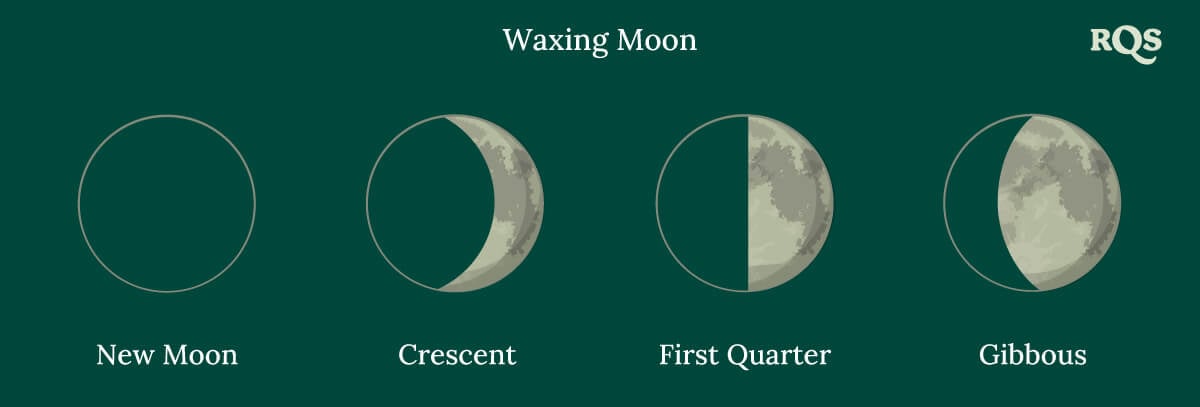
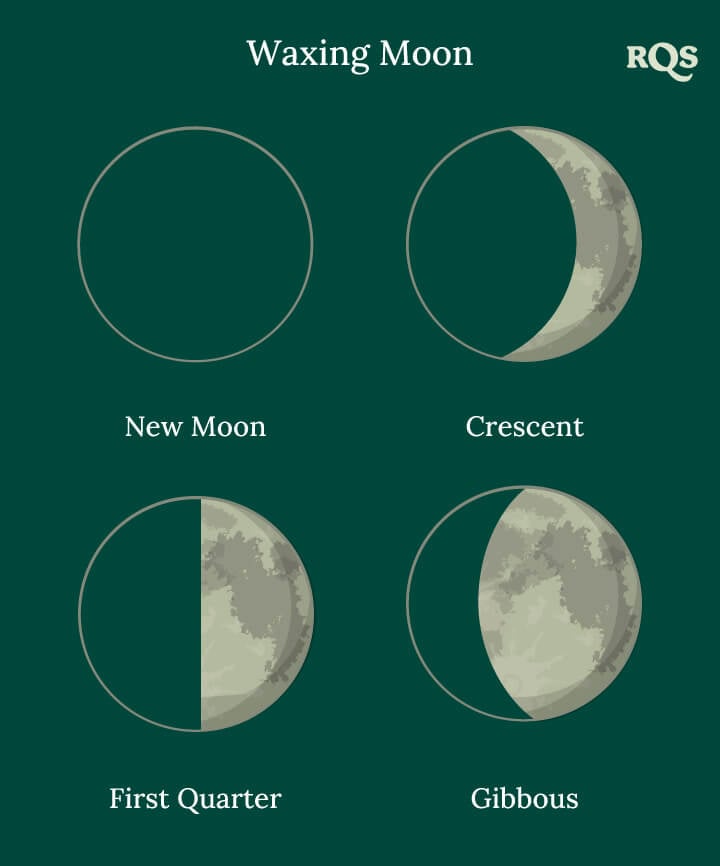
-
New Moon
The new moon marks the beginning of a new lunar cycle. Here, the moon takes a position directly between the earth and the sun. The side of the moon that faces the earth appears completely dark. As the moon begins to shift into the next stage, only a thin slice of the side of the moon reflects sunlight to the earth, giving rise to a razor-sharp crescent shape.
-
Crescent
During this stage, the moon appears as a more developed crescent shape. The giant ball of rock moves out of the space directly between the earth and the sun, reflecting more sunlight towards the earth as more of the illuminated side becomes visible.
-
First Quarter
During the first quarter, the moon sits 90 degrees from the earth. From here, we can see half of the moon illuminated by the sun, taking on a semi-circular “D” shape.
-
Gibbous
As the final stage of the waxing moon, the gibbous moon reflects even more sunlight towards the earth. Although not quite full, the illuminated patch of the moon takes on a lemon-shaped appearance.
Waning Moon
The waning moon comprises the second half of the lunar cycle, and also takes place over 14–15 days. During the waning phase, the moon gradually becomes less illuminated as it nears the completion of the cycle at the point of the new moon.
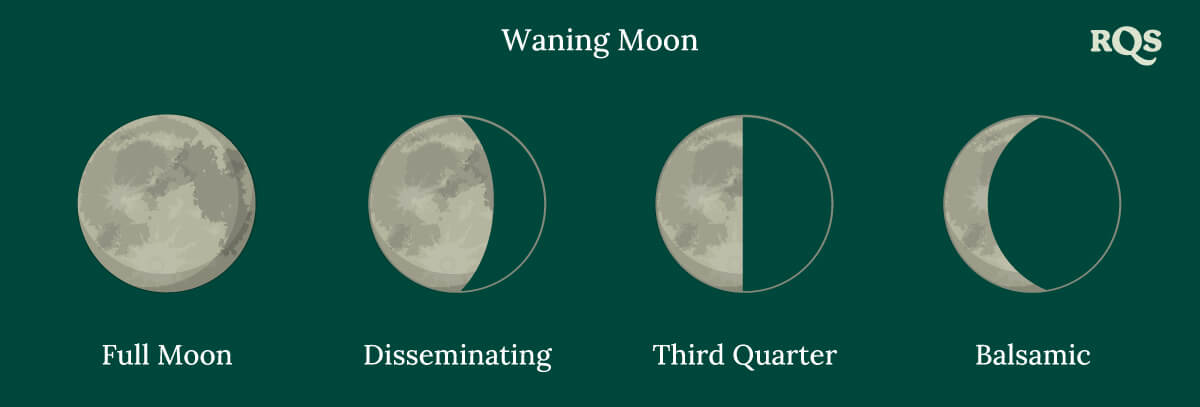
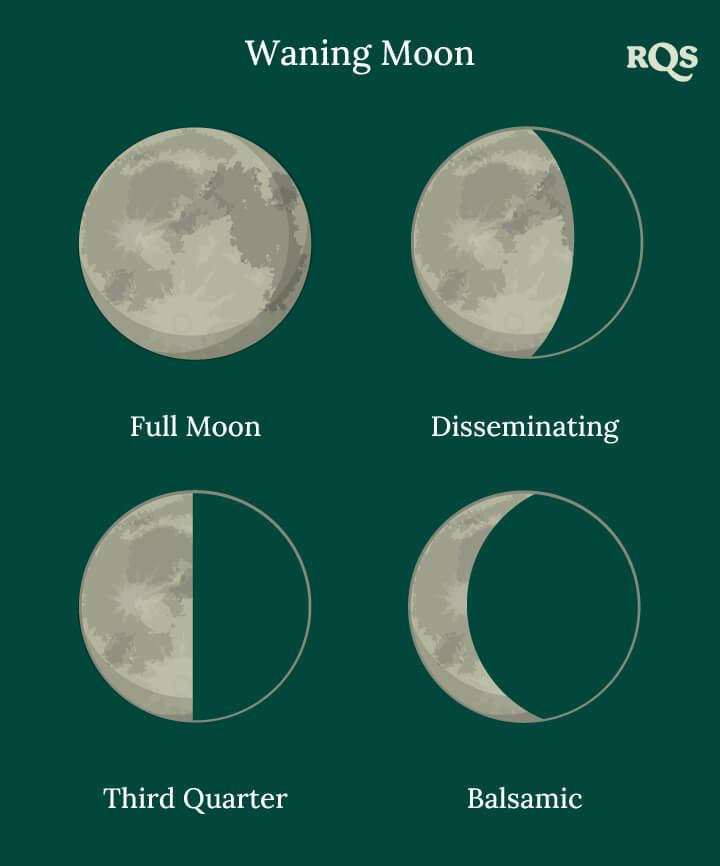
-
Full Moon
The full moon lights up the night sky, rains photons down onto foliage, and plays a key role when growing cannabis according to the moon. During this time, the earth sits roughly between the sun and the moon. As light from the sun rushes past our home, it lights up the entire face of the moon.
-
Disseminating
Much like the gibbous moon of the waxing phase, the disseminating moon takes on a lemon shape as it slowly becomes less illuminated during the waning phase of the lunar cycle.
-
Third Quarter
The moon returns to a 90-degree position from the earth, this time on the opposite side of the planet. Once again, it reflects the light of the sun in a way that displays a semi-circle.
-
Balsamic
The balsamic moon sits at a 45-degree position from the earth. Here, very little of the surface of this natural satellite remains visible, giving rise to a sharp crescent shape.
The Ascending and Descending Moon
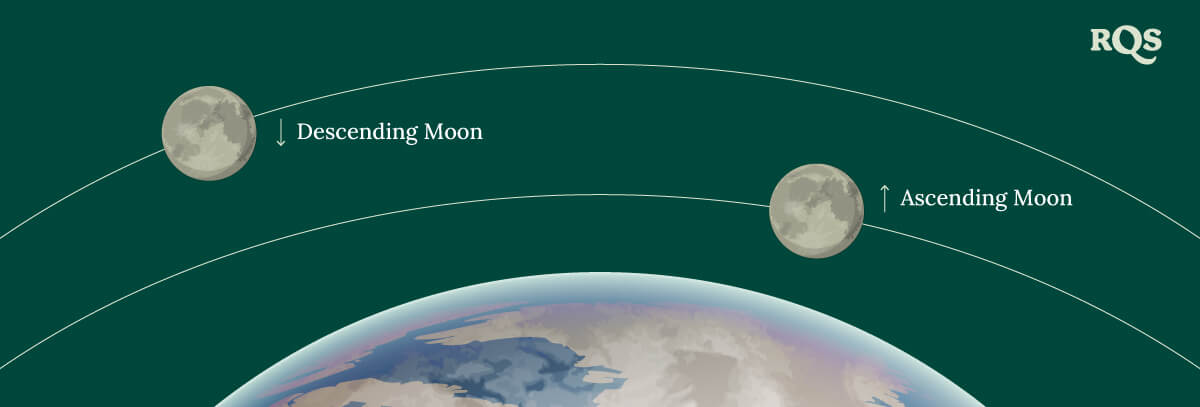
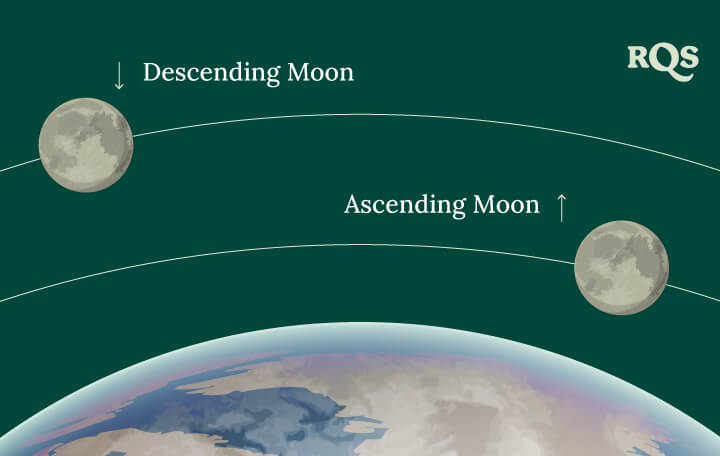
The moon ascends or descends in the sky, a trait that remains unaffected by its waxing or waning status. The moon moves to a higher and lower position in a cyclic fashion over 27 days, 7 hours, and 43 minutes.
When planting with the moon, growers should take into consideration where the moon sits in the sky, as this also affects timing related to feeding, germination, and other tasks gardeners must undertake. The moon spends half of the month in the ascending phase, where it appears higher in the sky, and the other half in the descending phase, where it appears lower.
Both of these periods heavily influence weed growers planting by the moon. They dictate the movement of plant fluids during different times on the moon timetable, and guide growers in their activities.
Constellation Also Plays a Role When Growing Weed by the Moon
The night sky features 12 prominent star constellations, each associated with their own zodiac sign. All 12 signs are divided into four groups, and each group features its own element found in nature. As the moon glides over a constellation, moon growers believe this element becomes strongest in the garden, and they conduct tasks accordingly.
-
Fire
During periods where the moon sits over a fire sign constellation, growers should focus on planting seeds. These zodiac signs make up the fire group:
- Aries
- Leo
- Sagittarius
-
Air
Growers pay significant attention to the flowers of the plant when the moon presides over an air sign. Zodiac signs of this group include:
- Gemini
- Libra
- Aquarius
-
Water
Water signs signify a time when leaves and stems swell and grow. Signs that make up this group are:
- Cancer
- Scorpio
- Pisces
-
Earth
Earth constellations are associated with the roots and soil. These signs include:
- Taurus
- Virgo
- Capricorn
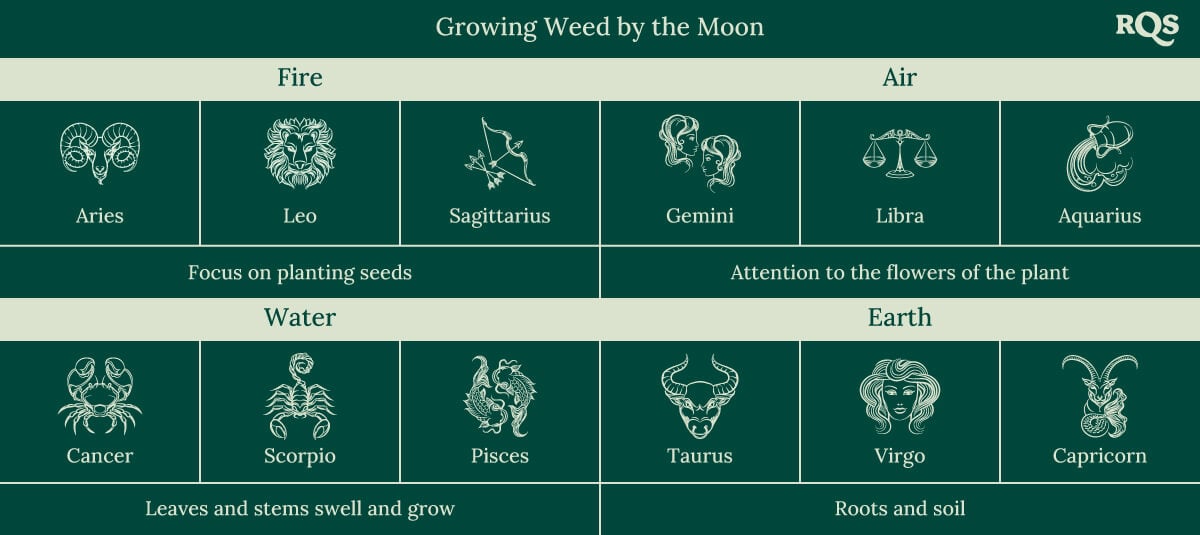
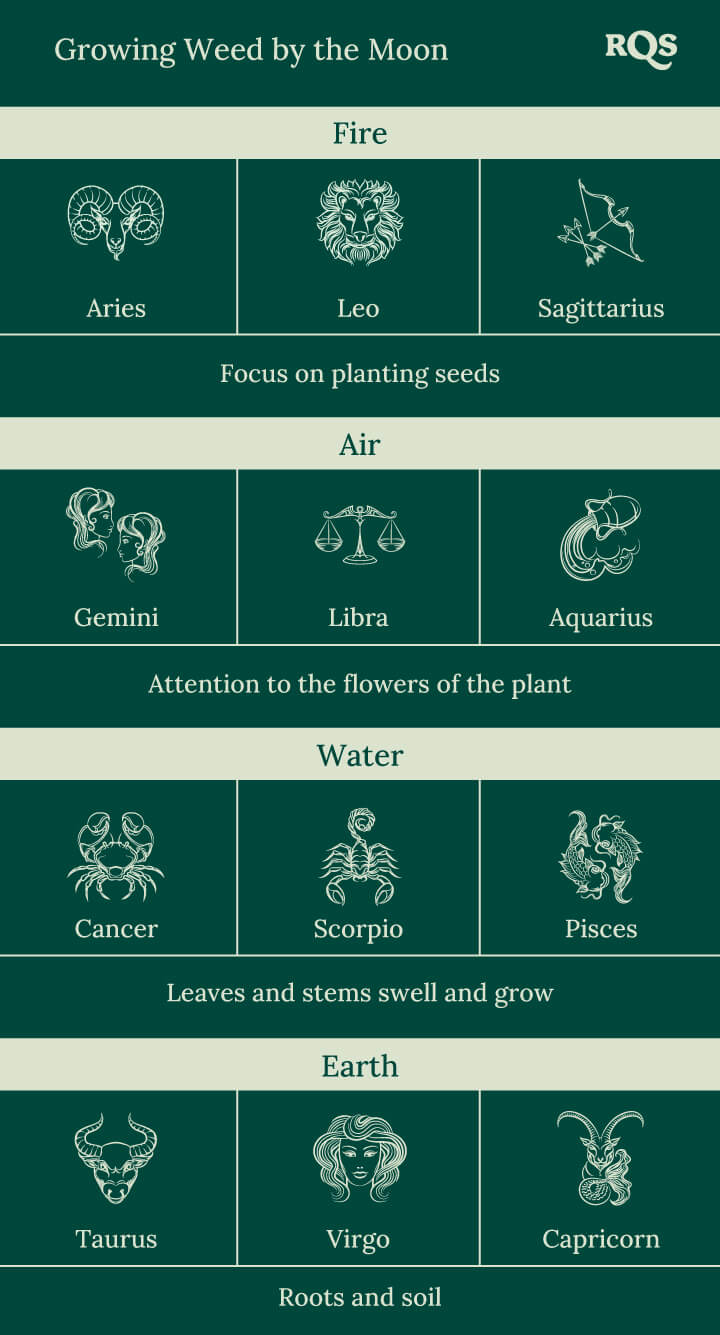
How the Moon Affects Cannabis Growing
When growing cannabis using the moon calendar, cultivators can harness the effects of the celestial body to optimise plant health and productivity. The waxing and waning periods of the moon provide a natural timetable that guides growers throughout the season.
The ascending and descending periods also tell growers when to carry out certain tasks. According to moon gardeners, as the moon sinks lower, it forces sap (the life energy of plants) into the ground. In contrast, when the moon rises high, it pulls this energy up into the plants where it bathes the flowers, stems, and leaves.
Timing your gardening activities with this natural cycle will help you make the most of the lunar phases. For example, transplanting cannabis plants into the ground during a descending moon will help to give them the best start, as most of the energy they require will occupy the ground at this time.
Gardening in sync with the constellations adds further finesse to planting by the moon. Germination, watering, and feeding with these cycles work to boost the element associated with each task, enhancing the outcome of your grow.
How to Use the 2024 Lunar Calendar During the Growing Season
Now that you’re aware of the possible impact the phases of the moon have on the growing cycle, it’s time to put some of that knowledge into practice. Keep reading to find out how key points in the season, such as germination, training, and harvesting, correlate with the 2024 moon calendar.
Germination When Planting by the Moon
If you’re planning on adhering to the lunar calendar of 2024 when growing cannabis, you’ll want to germinate your seeds when a full moon sits within a fire sign. Why? Well, the tradition of growing with the rhythm of the night sky equates fire signs (Aries, Leo, and Sagittarius) to warmth, which seeds need to germinate correctly.
You have a range of options here. If you’re starting your plants indoors and live in a region with a long growing season, you can sow seeds as early as January. If you find yourself scrambling later on in the growing season, you can sow fast-growing auto seeds as late as June. Here are the dates when a full moon sits in a fire sign:
- January 25th
- February 24th
- March 25th
- April 23rd
- May 23rd
- June 22nd
Soil Preparation With the Moon Planting Calendar
Even if you’ve sown seeds extremely early in the year, you can still capitalise on the soil preparation dates below when it comes to transplanting. It won’t come as a surprise to learn that moon growers suggest preparing the growing medium when a waning moon sits in the earth sign of Virgo. During a waning moon, when moonlight decreases as the celestial body transitions from full to new, sap is drawn down into the soil below. Of course, this becomes more relevant when living plants are in the soil, but this period has become the go-to for soil preparation, too. Aim to put together a rich and nourishing soil on these dates:
- February 27th
- March 24th
Transplanting With Lunar Rhythms
When planting by the moon calendar, tradition holds that transplanting should take place when the moon sits in a water sign, but in its waxing phase. While a waning moon causes sap to move into the soil, a waxing moon draws it up and into freshly transplanted seedlings, filling them with water and nourishment. A waxing moon sits in the water signs of Cancer, Scorpio, or Pisces during the following dates:
- March 11th
- March 20th
- April 16th–17th
- May 13th–14th
- June 9th
Training and Pruning by the Cannabis Moon Calendar
Training your plants has the potential to transform a good grow into a great one. Techniques such as LST create more uniform buds and enhance yields. Pruning in the form of topping breaks the plant’s apical dominance, whereas defoliation helps to open up the canopy and boost airflow and light exposure. In the context of the moon calendar, these procedures should take place when a waxing moon enters the water constellations of Pisces, Cancer, and Scorpio, as sap and water rise up in branches. Training occurs earlier in the growing season, and should be performed on the following dates according to the 2024 calendar:
- February 12th–13th
- March 11th–12th
- April 9th
- May 12th
- June 9th
Pruning should occur later in the season on the following dates:
- July 6th–7th
- August 5th
Fertilise as the Moon Wanes in Water
Fertilisation occurs in a waning moon as sap descends into the soil, allowing the flow to carry nutrients back up into the plant as the moon enters a waxing phase again. Keep in mind that both synthetic and organic liquid fertilisers provide fast-acting nutrients, and organic matter such as mulch takes much longer to break down. Fertilisation should occur when a waning moon sits in the water signs of Pisces, Cancer, and Scorpio. Aim to feed your plants on the following dates:
- February 5th
- March 3rd
- May 5th
- June 1st
- June 29th
- August 3rd
- August 31st
- October 25th
Harvest: Air Constellations and Full Moons
You have two choices when it comes to harvesting those ripe buds. The first option involves reaping your reward during a waxing moon that sits in an air constellation; a waxing moon will pull the sap into your flowers prior to harvest, whereas air signs are associated with canopies and the aerial parts of plants. Aim for these dates when taking this approach:
- June 18th
- July 15th
- September 17th
- October 14th
- November 10th
Likewise, many growers who cultivate according to the lunar calendar harvest during a full moon, based on the belief that this astronomical event helps to draw up resources and vitality into plants. You’ll also have more natural light available if you end up working into the night. Follow these dates to harvest during a full moon in 2024:
- Capricorn: June 21st
- Capricorn: July 21st
- Aquarius: August 19th
- Aries: October 17th
